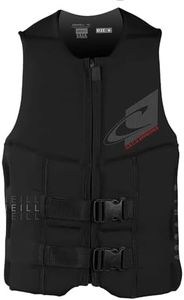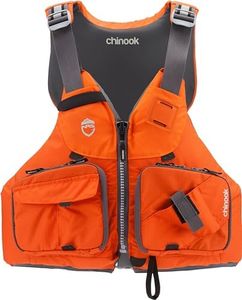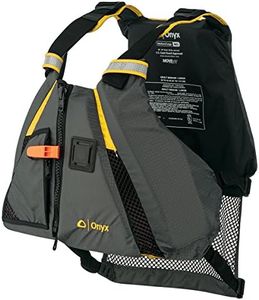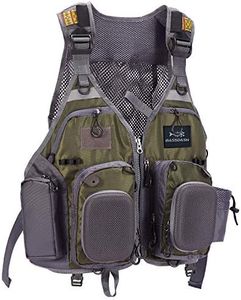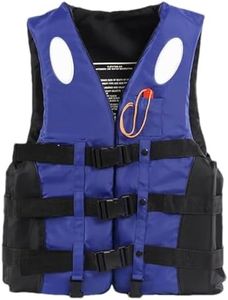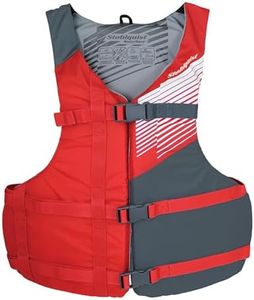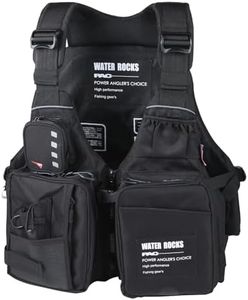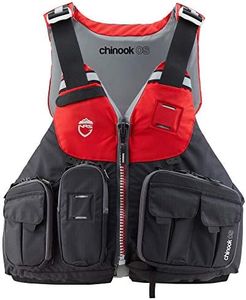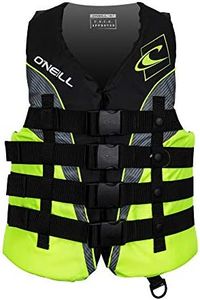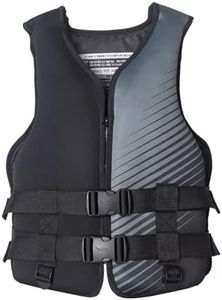We Use CookiesWe use cookies to enhance the security, performance,
functionality and for analytical and promotional activities. By continuing to browse this site you
are agreeing to our privacy policy
10 Best Fishing Life Vest
From leading brands and best sellers available on the web.Buying Guide for the Best Fishing Life Vest
Selecting the right fishing life vest goes beyond just safety—it’s about comfort, functionality, and meeting the unique needs of your fishing trips. A proper life vest not only keeps you buoyant if you fall in, but can also provide pockets and features specifically helpful for anglers. The best vest feels comfortable for hours, allows free movement, and keeps you safe without making you overheat or get weighed down. Knowing what to look for in the key specifications will help you pick a vest that makes fishing safer and more enjoyable.Buoyancy RatingThe buoyancy rating tells you how much flotation the vest provides, usually measured in pounds or newtons. This rating matters because it has to keep your head above water even if you’re unconscious, dressed in fishing clothes, or carrying some gear. You’ll find lower ratings around 15–17 pounds, which are common for recreational vests and suit calm waters with quick rescue. Higher ratings, around 22 pounds and above, offer more flotation for rougher conditions or if you wear heavy clothing. Pick a rating based on your fishing environment, body weight, and how much gear you may have on.
Type/ClassificationLife vests are sorted into types (like Type I, II, III, etc.) based on their intended use and performance. These types matter because they indicate the vest’s ability to flip an unconscious person face-up and suit different water conditions. For fishing, most people choose Type III vests, which are comfortable and allow good mobility but are best suited for calm, inland waters. If you fish in offshore or turbulent conditions, a Type I or Type II might be safer as these can turn a person face-up and provide higher buoyancy. Your fishing location and risk of rescue delay should be your guide here.
Fit and AdjustabilityFit means how well the vest hugs your body, while adjustability refers to straps and buckles that tailor it tighter or looser. A good fit is crucial for both safety and comfort—if a vest is too loose, it may ride up and not work properly if you enter the water. Look for multiple adjustable points at the waist, shoulders, and sometimes sides. Trying on or measuring yourself against sizing charts helps you get the right size, and extra adjustability is important if you layer clothing underneath or share the vest between users.
Material and BreathabilityThe material affects the vest’s durability, weight, and cooling. Nylon and polyester are common for their lightness and quick drying; mesh panels or breathable linings are great for letting air flow and keeping you cool during summer fishing. Foam or inflatable sections impact weight and comfort; inflatable vests are lighter but need more maintenance. Pick based on your typical climate, comfort preferences, and how much care you’re willing to provide, especially if you’re fishing for hours in the sun.
Pockets and Fishing FeaturesMany fishing life vests come with built-in pockets, tool holders, and attachment points. These features keep essentials like tackle, pliers, and phones close at hand. More pockets help you organize gear, but too many or bulky ones can make the vest heavy and restrict movement. Think about the kind of fishing you do—if you change lures often or need quick access to gear, more and specialized pockets are helpful. If you prefer to pack light, look for simple designs that stay out of your way.
VisibilityVisibility refers to how easily you can be seen in the water, usually improved by bright colors or reflective strips. This spec is important for safety, especially if you fish early in the morning, at dusk, or in busy boating areas. High-visibility vests help you stand out if you ever need to be spotted quickly by rescuers or other boats. Choose based on your fishing times and locations—if you expect lower light or crowded conditions, go for bright, reflective options.
